Table of contents
Olive oil is produced by pressing olives ( Olea europaea ). Olive oil is available in raw and organic quality.
Use in the kitchen
Olive oil is considered to be a particularly healthy oil, although other oils such as rapeseed oil and linseed oil have a better fatty acid profile with a higher content of omega-3 fatty acids . Oil is a concentrate, so it should only be consumed occasionally in small quantities. For health reasons, fats should be consumed in the form of nuts and seeds.
Olive oil is a defining aromatic element in Mediterranean cuisine. Olive oil is one of the main ingredients in pestos, tapenades and other Mediterranean spreads. Garlic, mushrooms, dried tomatoes, olives, cream cheese or hard cheese, chili peppers, eggplants, artichokes, carrots and much more can be preserved in olive oil and thus preserved for longer. This is how many of the traditional antipasti (Italy) or tapas (Spain) came about.
Can you heat cold-pressed olive oil? Cold-pressed olive oil can be used for gentle steaming and cooking at low temperatures. However, aromas evaporate and the phenol content decreases. It is therefore more sensible to use refined rapeseed oil for frying and cooking and cold-pressed olive oil for cold dishes. 1,2
Without heating, olive oil is used to flavor raw or cooked vegetables, potatoes, grains or pasta, as well as to make salad sauces, dressings and dips. It goes well with garlic, rosemary, thyme, parsley, oregano or paprika powder .
Herbal or spice oils are often made from olive oil and tasty spices that are left to steep for some time.
Vegan recipe for flavored olive oil
Ingredients: Put 1-2 dried bay leaves, 4-5 dried tomatoes, 1 teaspoonblack peppercorns (slightly crushed) in a bottle and fill with 500 ml extra virgin olive oil (organic). Leave in a dark, cool place for about 3-4 weeks and then use for salads, dressings, etc. Do not heat!
Preparation: Spices or herbs such as thyme, rosemary, sage, lemon peel, vanilla pod, chili peppers etc. are also suitable. However, these ingredients should only be used dried.
Vegan recipes with olive oil can be found under the note: " Recipes that have the most of this ingredient ".
| Not only vegans or vegetarians should read this: Vegans often eat unhealthily. Avoidable nutritional errors . |
Purchasing - Storage
You can buy olive oil in every supermarket and at every major retailer such as Coop, Migros, Denner, Volg, Spar, Aldi, Lidl, Rewe, Edeka, Billa and Hofer . Cold-pressed olive oil in organic quality can now also be bought in most supermarkets, but definitely in organic supermarkets (e.g. Alnatura or Denn's Biomarkt ) and health food stores. Olive oil is available all year round .
The best and rarest olive oil is said to be the drip oil that seeps out of the olives before pressing. After that comes the cold-pressed olive oil with the quality class "extra virgin" or "extra virgin". Natural oil with small defects is called "virgin". Refined oils come from conventional mass production and have a very mild taste, mostly blended with virgin oils. Organically produced olive oil comes from olives that have been carefully processed (at low temperatures of up to 27 °C). 10 By law, the terms "first cold pressing" and "cold extraction" are only permitted if the temperatures do not exceed 27 °C. 13,14 Cold pressing can reach temperatures of up to 30 °C. 25
How much does a good olive oil cost? High-quality extra virgin olive oil can cost between 24 and 36 euros per liter. You should avoid olive oils with names such as "blend of olive oils" or "EU virgin olive oil" as there is a risk that they are adulterated bottlings. If you want to be on the safe side, buy cold-pressed olive oil in organic quality and with an indication of the place of origin.
The availability of olive oil varies depending on the size of the store, catchment area, etc. Our recorded food prices for the DA-CH countries can be found above under the ingredient image - and by clicking you can see their development at different suppliers.
Cold-pressed oils (laws, raw food)
In Switzerland, oil is generally referred to as cold-pressed oil if the oilseed was not heated, the pressing temperature was below 50 °C and no problematic post-treatment took place.
According to the Federal Department of Home Affairs ( FDHA ), an edible oil is considered cold-pressed (or may be referred to by synonyms such as (extra) virgin, unrefined, cold-pressed or natural) if it is obtained by pressing or centrifuging from raw materials that have not been heated beforehand, the temperature during pressing did not exceed 50 °C and there was no refining, i.e. no neutralisation, no treatment with adsorbents, bleaching earth and no steaming . 16
An oil may be described as “gently steamed” if the refining process was limited to steaming and did not exceed 130 °C . 16
In the EU and the USA, there does not appear to be a generally applicable temperature limit set by law for cold-pressed oils. For example, the guidelines for edible fats and oils of the Federal Ministry of Food and Agriculture (D) are similar to the EDI regulation, but they do not specify a permissible maximum temperature for general cold pressing - since they only apply to products whose labelling and composition are not conclusively set by law (i.e. not for olive oil, cocoa butter, milk fats, spreadable fats, for example). 17
On the other hand, both the EU directives and the EDI regulation on foods of plant origin, mushrooms and table salt (and their amendments) provide for a special rule for the labelling of olive oils. 13,14,16,19
These are selective marketing rules in which the term raw food is not defined. "Raw food" and "raw" are therefore not state-protected terms (as is the case with the term "organic"), which leaves a lot of room for interpretation. Although it is agreed that with purely mechanical cold pressing, the pressing temperatures generally do not exceed 40 °C, one should not naively assume that cooking oils are of raw food quality. There is a suspicion that the measuring method used does not indicate the temperature in the press cylinder (where the heat is highest), but only the outlet temperature in the oil hose. With water-cooled olive oil presses (so-called "water-cooled 37°" oil presses), one probably cannot even say with certainty what the temperature is inside the press cylinder because the entire press cylinder is surrounded by cooling sleeves.
In addition, the pressing pressure and speed as well as the moisture content of the oilseed influence the pressing temperature. 18
Storage tips
Since olive oil contains few polyunsaturated fatty acids (PUFA), it can be stored for a long time and easily. However, it is better to store it in a cool place and protected from light. If stored in a cool place, streaks can form that make the oil appear cloudy. These dissolve again at higher temperatures.
Ingredients - Nutritional values - Calories
Olive oil contains a lot of calories (884 kcal/100g), which come exclusively from fats. There are no carbohydrates or proteins. 14 g of 100 g are saturated fats. 6 Based on a portion size of 10 g (approx. 1 tablespoon), this results in 88.4 kcal/portion or almost 7% of the recommended daily allowance of saturated fats.
Olive oil is known for its unsaturated fatty acid content, but compared to other oils it contains very little of these and the ratio between omega-6 and omega-3 fatty acids is unfavorable (see Effects on Health below). Olive oil provides 8.8 g of linoleic acid (omega-6 fatty acid ) per 100 g. In comparison, rapeseed oil contains 19 g/100g, pumpkin seed oil 49 g/100g, walnut oil 53 g/100g and hemp oil 54 g/100g. Grape seed oil contains slightly more at 70 g/100g. 6 The alpha-linolenic acid (omega-3 fatty acid ) content is 0.76 g/100g. This is many times less than, for example, in rapeseed oil 9.1 g/100g, walnut oil 10 g/100g or linseed oil 53 g/100g. 6
Vegetable cooking oils are known for their high content of vitamin E. Olive oil contains 14 mg/100 g. This is comparable to rapeseed oil 17 mg. Higher values are found in grape seed oil (29 mg),sunflower seed oil (41 mg), hazelnut oil (47 mg) and truffle oil (62 mg). 6
The complete ingredients of olive oil, the coverage of the daily requirement and comparison values with other ingredients can be found in our nutrient tables below the ingredient image.
Effects on health
Is olive oil healthy? The most important criterion for assessing an oil as "healthy" or "unhealthy" is the ratio between the omega-6 fatty acid and the omega-3 fatty acid. The ideal ratio would be 1:1 (LA:ALA), because both serve the same receptors in the body. In 2006, the Federal Nutrition Commission (EEK) recommended reducing the ratio to at least 5:1. 9
Olive oil has an unfavorable fatty acid ratio of 12:1. Cold-pressed rapeseed oil, with a ratio of 2:1, is much healthier than olive oil. In this respect , cold-pressed linseed oil (linseed oil, flax oil) would be the best oil of all, but it cannot be heated and does not keep for long. As a salad oil, it would be by far the healthiest oil.
Recommendation of the Federal Nutrition Commission 2006
In 2003, the EEK was commissioned by the Federal Office of Public Health ( FOPH ) to compare the health significance of fats and oils recorded in 1992 with the current state of science. 9 The working group led by Prof. Dr. med. Ulrich Keller delivered the report in 2006. Prof. Jacques Diezi was the president of the EEK . The 50-page report by Dr. sc. nat. Paolo Colombani (SGE, ETH), Prof. Dr. med. Ulrich Keller, Dr. Ulrich Moser (DSM) and Monika Müller concludes (conclusion): The existing recommendations from 1992 must be adapted to the latest scientific findings. The most important findings are:
We should reduce our consumption of saturated fatty acids with 12 to 16 carbon atoms. This lowers LDL cholesterol, thus reducing the risk of atherosclerotic disease and reducing the risk of diabetes. Saturated fatty acids should make up less than 10% of the energy consumed. This can be achieved by reducing the intake of animal fats and baking fats. 9 As the example of coconut oil shows (and to a lesser extent olive oil), even vegans and vegetarians can eat the wrong foods in this regard. See the link in the box above.
We should avoid trans fatty acids (TFA) . The maximum recommended limit is 1 g TFA per 100 g of product, and for oils and margarines, a maximum of 1% of the total fat content. The amount consumed daily should not exceed 1% of the total energy content. Trans fatty acids are produced during partial fat hardening, during frying and during the deodorization of oils. TFA have adverse effects on blood fats, such as an increase in LDL cholesterol and a decrease in HDL cholesterol, which increases the risk of atherosclerotic diseases. 9
Monounsaturated fatty acids should make up the largest proportion of all fatty acid groups, accounting for 10 - 15% of the energy consumed per day, or 20 - 30 g/2000 kcal or 8400 kJ.
Polyunsaturated fatty acids are essential and are divided into two main groups: 1. Linoleic acid and its derivatives as the group of n-6 or omega-6 fatty acids (LA); 2. α-linolenic acid or alpha-linolenic acid and its derivatives, omega-3 or n-3, often just called linolenic acid or ALA for short. The main sources of LA are vegetable oils 9, but it is also found in nuts and seeds. The main sources of healthy omega-3 (ALA) are, for example , rapeseed oil, nuts and leafy vegetables. 9 Excessive consumption of n-6 fatty acids can promote thrombosis and inflammation. It is therefore sensible to reduce the ratio of n-6:n-3 to 5:1. The current ratio is currently around 10:1. There is evidence that reducing this ratio can, for example, lead to fewer atherosclerotic diseases and reduce inflammatory processes . 9
LA, the n-6 fatty acid, should be around 2.5% of daily energy or 6 g per 2000 kcal or 8400 kJ. ALA, the n-3 fatty acid, should be around 0.7% of daily energy or 1.7 g per 2000 kcal or 8400 kJ. This is what the study says, because we know that it would be utopian to aim for a better ratio (i.e. with more ALA). After twelve years, we are in the same place: far too much LA and too little ALA.
The working group believes that babies and small children should also consume long-chain N-3 fatty acids, i.e. EPA and DHA, in the form of fatty fish, fish oil, or capsules. Original text: It is recommended to eat fish 1-2 times a week (100-240 g per week). The need for these essential fatty acids can also be covered with 500 mg of eicosapentaenoic acid (EPA) and docosahexaenoic acid (DHA) per day in the form of native fish oil or capsules . In consultation with a doctor, adults who have had a heart attack may find it useful to take native fish oils or fish oil capsules (1,000 mg per day or more), as they are thought to have a protective effect against further heart complications . 9 In other words, this should also be taken into account as you get older. The body's own conversion of ALA to EPA and DHA decreases with age, and the need actually increases.
Only "no oil" would be healthier, instead of seeds and nuts, and apple cider vinegar, lemon juice and spices as a dressing. All oils are concentrated foods that have been through various processing steps. In general, whole, unprocessed foods such as nuts or seeds are preferable. Various American doctors, including heart specialists, take an even stricter approach by rejecting oil on principle and recommending a switch to nuts and seeds. We are talking about Dean Ornish, T. Colin Campbell, John A. McDougall, Michael Klaper, Caldwell Esselstyn, Michael Greger, Joel Fuhrman and Neal D. Barnard, who basically explain that a diet high in animal fats and proteins (like the standard American diet) is bad for your health.
Health-conscious people get polyunsaturated fatty acids from linseed, chia seeds, walnuts (tree nuts), macadamia, herbs and leafy vegetables because they have a particularly good ratio of LA to ALA. For practically all foods you can find detailed tables under the ingredients, which can also be reached from the recipe. The recipes also summarize this. Erb-Müesli, for example, has the ideal composition, with an LA-ALA ratio of 1:1. Regardless of whether you pay attention to the ratio or the absolute numbers: Due to the excessive use of cooking oils, vegans and vegetarians in particular get too many omega-6 fatty acids. The ratio is usually between 14:1 and 20:1. 27 Details can be found in the text " Vegans often eat unhealthily. Avoidable nutritional errors ".
The term " Mediterranean diet" has been a defining feature of the world of nutrition for several years. The Seven Countries Study (SCS), launched by Ancel Keys in Yugoslavia in 1958, was the first systematic study on nutrition, risk factors, and disease-specific mortality rates among working men from regions with different traditional diets. 28 The data collected and analyzed over 15 years concerned 12,763 men between the ages of 40 and 59 and revealed that heart disease is not (as was assumed at the time) inevitably related to age, but can also be influenced by other factors. 29 The different frequencies of coronary heart disease could be attributed to differences in the consumption of saturated fats and average cholesterol levels. 30
Since the Mediterranean countries in the study had a low risk of heart disease, the diets summarized under the term "Mediterranean diet" were considered protective for heart health. Of course, there is no such thing as "THE" Mediterranean diet, because the Mediterranean borders many countries that differ greatly in terms of geography, economic status, health, lifestyle and diet. What the diets had in common, however, was olive oil as the main fat component; they also had a high proportion of cereal products, pulses, fruit and vegetables, a moderate proportion of fish and a low proportion of dairy and meat products. They had a low proportion of saturated fats, very few trans fats and were rich infiber and antioxidant ingredients. 31
The high consumption of olive oil is considered a hallmark of the traditional Mediterranean diet. This has led to olive oil becoming increasingly popular and is often touted as a "healthy" oil. The industry knew how to take advantage of this and has marketed the oil heavily under this aspect. Even today, there are many statements on the Internet that attribute the health value of olive oil to the findings of the "Mediterranean diet". The fact is that a number of healthy factors work together in the Mediterranean diet, so that it provides added health benefits over a longer period of time. This includes food that is rich in fiber and antioxidants through pulses, fruit and vegetables and contains little dairy and meat products. The health value of the Mediterranean diet is not only due to the "olive oil". The same thing happened with red wine, which was said to have a positive effect on health despite the alcohol. This is because it was also considered to be part of a "Mediterranean diet".
Secondary plant substances
Many of the health effects of olive oil can be attributed to the secondary plant substances it contains. Our article on secondary plant substances provides an overview of the classification of substance groups, their occurrence in foods and possible effects on humans.
While the main glycoside in olives is oleuropein, olive oil mainly contains hydroxytyrosol. 3 According to a scientific study, this oleocanthal is said to have an anti-inflammatory effect, comparable to certain anti-inflammatory, antipyretic painkillers. 4
However, it should be noted that the composition of secondary plant substances in olive oil can vary depending on the variety, time of harvest and growing conditions. Therefore, quantities are only of limited use and should only be understood roughly.
Dangers - Intolerances - Side effects
In 2024 , Stiftung Warentest tested 23 olive oils, including four frying olive oils. Of these, 6 failed, the majority were mediocre, and only four were good. 7
Olive oil is the most commonly counterfeited foodstuff in Europe. Counterfeiters mix olive oil from different regions of origin and sell it as Italian extra virgin olive oil or dilute it with cheaper oils. New magnetic resonance imaging analyses make it possible to determine the composition and country of origin of olive oil and thus detect olive oil fraud. 5
Folk medicine - natural healing
Olive oil and olives themselves are said to provide relief from gallbladder problems. 8
Ecological footprint - animal welfare
The CO 2 footprint is primarily used to assess the climate friendliness of a food. This depends on various aspects such as cultivation method (conventional/organic), seasonality, country of origin, processing, transport and, if applicable, packaging. Carbon Cloud gives a value of 3.06 kg CO 2 eq/kg for Italian olive oil and 2.65 kg CO 2 eq/kg for Spanish olive oil. 22 The Danish climate database Concito gives olive oil at 4.63 CO 2 eq/kg. 23
The water consumption of olives is 3015 l per 100 kg. This increases to 14,431 l/kg in the production of cold-pressed olive oil and to 14,726 l/kg in the production of refined olive oil. 24
Spain, the largest producer of olives, has had water problems for years. 12 In the southeast of the country, thanks to the supply of water from the north, a huge agricultural area has been able to develop that supplies half of Europe with vegetables and fruit. However, the amount of rainfall is decreasing from year to year and there are more droughts. This is leading to water shortages in the south of Spain and calls for the limitation of irrigation in agriculture. Irrigated farming now uses around 80% of Spain's water resources, and the trend is rising. 26
For detailed explanations of various sustainability indicators (such as ecological footprint, CO2 footprint, water footprint), see our article: What does the ecological footprint mean?
Animal protection - species protection
The mechanical harvesting of olives kills millions of songbirds every year. In Andalusia alone, it is estimated that 2.6 million songbirds die every year as a result of the night-time harvest. At night, the birds rest in the olive trees. The blinding lights of the machines confuse the birds and they wait. The harvesting machines suck the birds in along with the olives and kill them. Protected birds such as robins, goldfinches, greenfinches, warblers and wagtails are the ones most affected. This problem does not exist during the day, as the birds can fly away. That is why there are political efforts to ban night-time harvesting. 11
A completely different issue is the large monocultures with millions of olive trees and the threat posed by the bacterium Xylella fastidiosa, which has led to deforestation in hundreds of towns since 2013. To combat this, it is necessary to mow extensively across the entire area, plough the soil and use pesticides. Regarding the bacterium, the EU has promised several million euros for research and breeding of new olive varieties.
The olive fruit fly ( Bactrocera oleae ) must also be combated intensively. Then there are scale insects, spider mites and aphids as well as fungal diseases (eye spot disease). The stem rot caused by the cushion-shaped fire fungus ( Fomitiporia punctata ), a fungus, and the tubercle disease ( Pseudomonas syringae ssp. savastanoi pv. oleae ) require further measures that are detrimental to nature.
Worldwide occurrence - cultivation
Olives are the fruits of the olive tree or the common olive tree ( Olea europaea ) from the genus Olea (olive trees). The plant belongs to the olive family (Oleaceae).
There are two different varieties of the olive tree ( Olea europaea ssp. europaea ) that have been known since ancient times. Firstly, the wild form ( O. europaea ssp. europaea var. sylvestris ) and secondly, the cultivated form ( O. europaea ssp. europaea var. europaea ). According to current genetic findings, the wild olive tree, also known as oleaster, is considered to be the ancestor of most of today's varieties. Where the olive comes from exactly is not clear, but the gene center is believed to be in the east of the Mediterranean. 20 There are three groups of cultivated genotypes: those found in the eastern, western and central Mediterranean. 21
According to FAO, global olive oil production in 2021 was 3.35 million tonnes. The main producers were Spain (1.5 million tonnes), Italy (0.34 million tonnes) and Greece (0.3 million tonnes). 12
For information on growing and harvesting olives, see the ingredients Green Olives and Black Olives .
Industrial production
After harvesting, the olives should be processed on the same day if possible. In the oil mill, the olives are washed and freed of dirt and foreign bodies. The olives are then pressed, including the stones, until an olive paste is formed. During the milling process, the olive paste is stirred for 30 to 75 minutes, during which the paste must not heat up to more than 30 °C. The olive oil is then separated from the pomace, which can be done using different processes: pressing and centrifuging. Traditionally cold-pressed olive oil is produced by pressing. This exposes it to atmospheric oxygen, which triggers oxidation. Modern oil mills use centrifuging to separate the oil (cold extraction) in the absence of air. This improves the quality of the olive oil. The oil is cleaned by adding water, but the water must be removed again in a second step. This drastically increases the water consumption in the production of olive oil. Cold-pressed or cold-extracted olive oil is stored in steel tanks until the oil is filtered and poured into glass bottles. Cold-pressed olive oil does not need to be filtered, but consumers prefer clear olive oils without sediment. However, filtering reduces the shelf life and reduces the phenol content of the oil, which is why unfiltered virgin olive oil is preferable. 25
Further information
Regulation (EU) No 1308/2013 distinguishes eight designations for olive oil and olive pomace oil, three of which are intended for human consumption: 15
- Cold-pressed olive oil: The highest quality olive oil is "extra virgin olive oil" or "extra virgin olive oil" (Italian: extra vergine, English: extra vergin, French: vierge extra). "Extra virgin olive oil" has slight defects and a higher acid content.
- Olive oil: Mixture of refined olive oil and extra virgin olive oil or virgin olive oil. Mixing ratio is not prescribed.
- Olive pomace oil: Blend of refined olive pomace oil and extra virgin olive oil and virgin olive oil.
Alternative names
Olive oil in English is called olive oil.
Bibliography - 31 Sources
| 1. | Bundeszentrum für Ernährung. Speisefette und -öle. |
| 2. | Lozano-Castellón J, Vallverdú-Queralt A et al. Domestic Sautéing with EVOO: Change in the Phenolic Profile. Antioxidants. 2020;9(1):77. |
| 3. | Omar S. Oleuropein in Olive and its Pharmacological Effects. Scientia Pharmaceutica. 2010;78(2):133-154. |
| 4. | Beauchamp G, Keast R et al. Phytochemistry: Ibuprofen-like activity in extra-virgin olive oil. Nature. 2005;437:45-46. |
| 5. | Fieber T, Schenke R. Gefälschtes Olivenöl schneller entlarven mit Schnelltest. Br24. 2021. |
| 6. | USDA (United States Department of Agriculture). Nährstofftabellen. |
| 7. | Stiftung Warentest. Olivenöl im Test. So schmeckt der Klimawandel. 2024. |
| 8. | Roger P. Heilkräfte der Nahrung: Ein Praxishandbuch. 3. Zürich: Advent Verlag. 2006:165. |
| 9. | Schweizerische Eidgenossenschaft EKK Eidgenössische Ernährungskommission. Bericht: Fette in der Ernährung. 2006. |
| 10. | Pini U. Das Bio-Food Handbuch. Ullmann: Hamburg, Potsdam. 2014. |
| 11. | Da Silva LP, MAta VA. Stop harvesting olives at night - it kills millions of songbirds. Nature Correspondence. 2019;569(192). |
| 12. | FAO Food and Agriculture Organization of the United Nations. Crops and livestock products. Olive Oil. Production Quantity 2021. |
| 13. | Amtsblatt der Europäischen Union. Durchführungsverordnung (EU) Nr. 29/2012 der Kommission vom 13. Januar 2012 mit Vermarktungsvorschriften für Olivenöl. Artikel 5 a) und b). |
| 14. | EDI Eidgenössisches Departement des Innern. Verordnung des EDI über Lebensmittel pflanzlicher Herkunft, Pilze und Speisesalz (VLpH). Änderung vom 8. Dezember 2023. Inkrafttreten: 1. Februar 2024. |
| 15. | Amtsblatt der Europäischen Union. Verordnung (EU) Nr. 1308/2013. |
| 16. | Eidgenössisches Departement des Inneren EDI. Verordnung des EDI über Speiseöl, Speisefett und daraus hergestellte Erzeugnisse. Vom 23. November 2005 (Stand am 1. April 2008), Art. 3a und 3b. |
| 17. | Bundesministerium für Ernährung und Landwirtschaft. Leitsätze für Speisefette und Speiseöle. Neufassung vom 02.07.2020 (BAnz AT 18.08.2020 B3, GMBl 2020 S. 530), zuletzt geändert durch die Bekanntmachung vom 14.03.2024 (BAnz AT 18.04.2024 B2, GMBl 2024 S. 392-394). |
| 18. | Schaufler D. Oilseed Fact Sheet: Oilseed Presses. Dept. of Agricultural and Biological Engineering, Penn State College of Agricultural Sciences. |
| 19. | EDI Eidgenössisches Departement des Innern. Verordnung des EDI über Lebensmittel pflanzlicher Herkunft, Pilze und Speisesalz, vom 16. Dezember 2016 (Stand am 1. Juli 2020). |
| 20. | Langgut D, Cheddadi R, Carrión JS, Cavanagh M, Colombaroli D, Eastwood WJ, u. a. The origin and spread of olive cultivation in the Mediterranean Basin: The fossil pollen evidence. The Holocene. Mai 2019;29(5):902–922. |
| 21. | Tourvas N, Ganopoulos I et al. Wild and cultivated olive tree genetic diversity in Greece: a diverse resource in danger of erosion. Sec. Genomics of Plants and the Phytoecosystem. 2023;14:1-18. |
| 22. | Carbon Cloud. Olive Oil, 0.75l glass bottle italy, Olive Oil, 0.75l glass bottle spain. |
| 23. | The big Climate Database Concito. Olive Oil. 2014. |
| 24. | Mekonnen MM, Hoekstra AY. The green, blue and grey water footprint of crops and derived crop products. Hydrol. Earth Syst. Sci. 2011;15:1577-1600. |
| 25. | The American Oil Chemists' Society. Lipid Library. García-González DL, Aparicio R. Olive Oil. |
| 26. | Frey A. Es grünt nicht mehr in Spanien. Spektrum. 2023. |
| 27. | Davis BC, Kris-Etherton PM. Achieving optimal essential fatty acid status in vegetarians: current knowledge and practical implications. The American Journal of Clinical Nutrition. 2003 Sep;78(3):640S-646S. |
| 28. | Blackburn H. Invited Commentary: 30-Year Perspective on the Seven Countries Study. Am J Epidemiol. 2017 Jun 1;185(11):1143-1147. |
| 29. | Keys A, Menotti A et al. The seven countries study: 2289 deaths in 15 years. Prev Med. 1984 Mar;13(2):141-154. |
| 30. | Menotti A, Puddu PE. How the Seven Countries Study contributed to the definition and development of the Mediterranean diet concept: a 50-year journey. Nutr Metab Cardiovasc Dis. 2015 Mar;25(3):245-252. |
| 31. | Seven Countries Study. Mediterranean dietary patterns in the 1960s. |

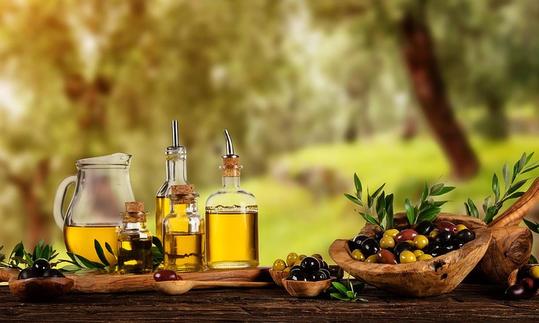

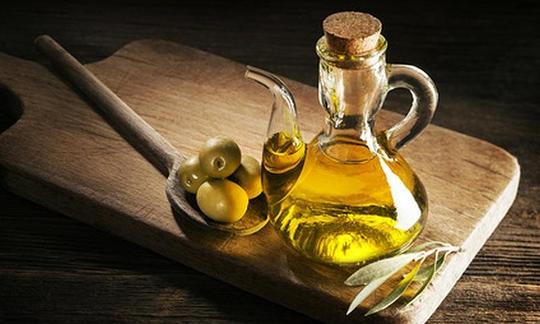

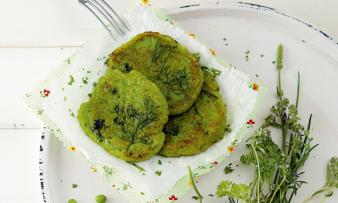
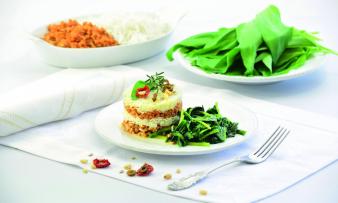
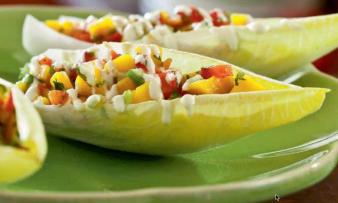





Comments